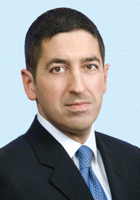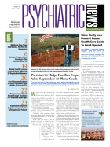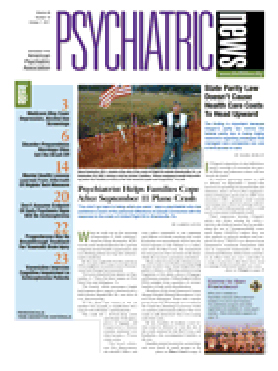Ten years ago, science generally looked at trauma as something that only affected individuals, said Sandro Galea, M.D., Dr.P.H., professor and chair of the Department of Epidemiology in the Mailman School of Public Health at Columbia University.
Today, thanks to research conducted in the wake of the September 11 attacks, there is an added appreciation for how trauma works on a population level, Galea told a conference on science, policy, and public health held at Columbia in September.
Galea began his talk with a major caveat. While researchers usually concentrate on pathological states, resilience is the norm for most people exposed to traumatic events.
"We read of the percentages of the exposed population that have PTSD or depression symptoms, but you almost never see that less than 50 percent have any pathology," said Galea. "The majority do not have physical or mental illnesses, so resilience should be one of the hallmark findings of 9/11 studies."
A consistent theme in those studies has been the role of exposure. For instance, rates of posttraumatic stress disorder (PTSD) in Manhattan after the attacks on the World Trade Center were 7 percent north of Canal Street, but 20 percent south of Canal Street, about three-quarters of a mile north of the site. And the sooner workers arrived at the site after the attack and the longer they worked there, the greater their exposure, and the greater their risk for disorders ranging from PTSD to asthma to gastroesophageal reflux disease.
Researchers observed other patterns too. The longer people had worked at the World Trade Center prior to the attack, the greater their risk for PTSD. Hispanics, especially Puerto Ricans and Dominicans, who are sizable ethnic populations in New York City, were at higher risk than other ethnic groups for reasons that remain unclear. In addition, research showed that people with less education had more psychopathology, as did people who worked on the rubble pile but were not trained for their tasks.
People aged 18 to 29 were at the highest risk for PTSD among age groups, while those aged 60 or older were at the lowest risk. Six months after the attack, 18 percent of New York City schoolchildren recorded PTSD symptoms, with girls displaying higher rates than boys. "This is a critical area that remains unclear," said Galea.
Depression Data Analyzed
He noted that there were also significant rates of depression (about 10 percent) among exposed populations, although that finding received less attention than those concerning PTSD. Studies conducted in the wake of the disaster showed that people with less education, those who watched more television imagery of the event, and those who had less social or financial support had higher rates of depression.
Research on drug or alcohol use following 9/11 produced mixed findings, Galea pointed out. Some people who drank a lot prior to the attacks kept drinking, and some curtailed it, while some moderate drinkers increased their intake, and some didn't. Some teetotalers maintained their abstinence—and some began to drink. Those myriad behaviors make it hard to parcel out a single effect of the trauma on alcohol consumption, he said.
There is "some evidence" that suicide in the six months after September 11 declined from earlier levels, and there is no evidence that it rose, he said.
"Most of the acute burden of psychopathology resolved within six months, but a minority continues to have problems," Galea noted.
Mental and physical illness overlapped in significant ways, he said. Those with PTSD had more asthma symptoms and visited emergency rooms and doctors more frequently than those without. Respiratory illnesses occurred in more than half of all workers at the World Trade Center debris pile.
"We should emphasize ways to minimize exposure among responders, especially those who are the first to arrive on the scene," he said. Many jurisdictions now mandate the use of masks by those responding to disasters, although research on their value is mixed.
Conversation Just Beginning
Much has changed since September 11, said Galea. The world has seen a litany of disasters, two U.S. wars, and economies in recession, but also improvements in scientific methods that combine molecular biology, genetics, epidemiology, and the social and behavioral sciences.
The science developed so far (and work still to be done) can eventually inform policymakers' decisions and improve the systems to permit intervention and mitigation of the consequences of disasters, he explained.
"Knowing what to expect from disaster—how much depression, PTSD, cardiovascular disease, cancer—is important for thinking about and planning for the next disaster," said Galea. "Today is not the end of the conversation, but the start."


